Ijraset Journal For Research in Applied Science and Engineering Technology
- Home / Ijraset
- On This Page
- Abstract
- Introduction
- Conclusion
- References
- Copyright
Design and Development of Delta 3D Printer
Authors: Prof. Rohan M. Panage, Prof. Kaustubh D. Agashe, Ms. Pragati H. Sakore, Mr. Atharv S. Kulkarni, Mr. Atharva S. Bele
DOI Link: https://doi.org/10.22214/ijraset.2023.51674
Certificate: View Certificate
Abstract
The Delta 3D printer project, design and development is focused on creating a 3D printer that can produce high quality prints quickly and accurately. We use a delta printer that uses three vertical arms to move the printhead. The printer is designed to use external components such as motor drivers, display lines and control boards. T he printer\'s firmware is also optimized for its performance and we use open-source software to interact with the printer. The printer was tested using PLA media and related settings, and the results showed that the printer was able to produce high quality prints with a fast print time. The Delta 3D Printer project was designed and created to further research to improve performance and functionality of 3D printers.
Introduction
I. INTRODUCTION
3D printing has revolutionized manufacturing and just got louder. The main benefit of 3D printing is the ability to create products and products as needed, leading to great results and efficiency in many industries. Delta 3D printers have become a popular choice for 3D printing as they can print faster and more accurately than other built-in printers. The Delta 3D printer project is designed and built to design and build a quality Delta 3D printer using off-the-shelf components and proprietary software.
The project is important as it lays the foundation for further research into improving the performance and capabilities of 3D printers that have an impact on manufacturing and beyond. Additive Manufacturing transforms manufacturing by providing cost-effective and flexible manufacturing methods. Fused deposition modelling (FDM) is one of the most widely used 3D printers in additive manufacturing because of its simplicity, accuracy, and ability to create products from a variety of materials. FDM enables the production of models and products with complex geometries that cannot be produced using traditional prefabrication methods. In addition, FDM reduces production times and costs as it eliminates the expensive tools and setup times required by traditional manufacturing processes. Together, additive manufacturing and FDM revolutionized manufacturing by providing unprecedented flexibility, speed and cost savings.
II. MANUFACTURING OPERATIONS
Manufacturing is the process of producing goods and products on a large scale. It involves converting raw materials into finished products using various manufacturing techniques. This process can be divided into different types according to the equipment used to manufacture the product. Manufacturing processes generally include additive manufacturing, additive manufacturing, fabrication, joinery fabrication, casting fabrication and fabrication. Each type of manufacturing process includes different technologies and has advantages and disadvantages. It is essential to understand the different types of production in order to choose the most suitable method for a particular product or application.
III. ADDITIVE MANUFACTURING
Additive Manufacturing, also known as 3D printing, is a rapid manufacturing process that involves layering products using a variety of materials such as plastic, metal, and ceramics. The process starts with the digital model of the desired product and then it is divided into sets with a special software. The layers are then overprinted using a 3D printer that places or adjusts the selected item. Additive manufacturing has many advantages over traditional manufacturing processes, including the ability to create complex geometries and materials quickly and cost-effectively. Additive manufacturing also eliminates the need for expensive equipment and reduces waste, making it an environmentally friendly option. However, it also has some limitations, such as limited material selection and lower production costs than traditional production methods.
However, additive manufacturing is becoming increasingly popular and has the potential to transform manufacturing in many industries.
A. Fused Deposition Modelling
Fused Deposition Modelling (FDM) is an additive manufacturing process that uses thermoplastic filaments to build a product layer by layer. The filament is fed into the extruder, which heats and melts the plastic. The molten plastic is then placed on a platform created in a pattern, creating the desired product. FDM has many advantages over traditional manufacturing processes, including the ability to create shapes and geometries and the ability to easily customize products.
It is also a cost-effective and environmentally friendly option as it reduces waste and eliminates the need for expensive equipment. However, FDM has some limitations compared to other additive manufacturing processes, such as lower cost and less material selection. FDM is widely used in the prototyping phase of product design as well as in low volume manufacturing. It has applications in many industries, including aerospace, automotive and medical equipment. Overall, FDM makes a significant contribution to manufacturing by providing a flexible and cost-effective way to manufacture products with complex geometries.
Fused Deposition Modelling (FDM) is a popular and widely used 3D printer that has revolutionized manufacturing. One of the main advantages of FDM is its simplicity. The tool is easy to use and can be used by professionals and amateurs alike. In addition, FDM provides high performance and manufactures products with high quality materials, making it suitable for many applications. Another advantage of FDM is that it can produce parts from various materials.
FDM printers can use different types of thermoplastic filaments, including PLA, ABS and PETG, to create different products such as strength, flexibility and heat resistance. In addition, FDM reduces production times and costs as it eliminates the expensive tools and setup times required by traditional manufacturing processes.
FDM enables the production of models and products with complex geometries that cannot be produced using traditional prefabrication methods. The process, which allows the creation of different and sensitive details, is ideal for the production of products that require high precision and perfection. In addition, FDM produces multiple parts at the same time, enabling the production of multiple components without the need for machinery or special tools. However, FDM also has some limitations. The technology is not suitable for manufacturing products with advanced materials or complex geometries, and finishing FDM parts may require additional operations such as grinding or painting.
In addition, FDM is not suitable for products that require high temperature resistance or high strength. Overall, FDM is a versatile and widely used 3D printer with many benefits for the manufacturing industry. Its simplicity, versatility and cost-effectiveness make it a popular choice for prototyping and low-volume production. As technology continues to advance, FDM will likely gain more visibility and continue to revolutionize manufacturing.
IV. DELTA PRINTING
A Delta 3D printer is a 3D printer that uses a Delta robot to move the print head instead of the XYZ Cartesian process. Delta printers are known for their speed, accuracy and ability to print large volumes in small batches. They are mainly used to manufacture high-performance products for industries such as aerospace, automotive and medical equipment. Delta printers can work with many materials such as plastic, metal and ceramic. They are also highly customizable, allowing users to customize their systems for specific applications. Overall, delta 3D printers provide versatile and efficient 3D printing solutions for a variety of industries and applications. Cartesian and Delta printers are two different types of 3D printers with different processes and features. The main differences between the two printers are:
- Mechanism: The Cartesian printer has a rectangular shape and works by using guides or chains to move the print head outward along the X, Y, and Z axes. The delta printer, on the other hand, has a circle or triangle and works around a platform created by moving the head up and down using three vertical arms attached to the head of the knuckles.
- Speed and Precision: The Delta printer is known for its speed and precision, thanks to its balanced kinematic design. They have high printing speed and can produce high quality prints with high performance. On the other hand, the Cartesian printer may not be as fast as the Delta printer, but can print more accurately due to strict patterns and guidelines.
- Design Volume: Due to their circular or triangular shape, Delta printers generally have a smaller volume than Cartesian printers. Cartesian printers, on the other hand, can produce larger sizes and accommodate many sizes.
- Ease of Use: Cartesian printers are generally considered easier to use and operate than Delta printers. They are simpler to operate and easier to calibrate and troubleshoot.
On the other hand, Delta printers require more skills and knowledge to operate and manage due to their complex processes.
In summary, Cartesian and Delta printers have different techniques and features that make them suitable for different applications and user needs. Cartesian printers are easy to use and provide greater precision, while Delta printers are faster and produce high quality prints with high precision.
V. DELTA PRINTER DESIGN AND SPECIFICATIONS
Delta printers are one of the most innovative products available today. To understand the operation and difference between a delta printer and a Cartesian printer, we want to create a working model of a delta 3D printer. We want to use the existing printer that our university already has and is available to students. We use useful products for new printers. Components usually consist of static and hardware components
A. Hardware Components and Features
- Stainless Steel Nozzle: The Nozzle used to release molten PLA is made of stainless steel and works best when approximately 210C PLA is passed through it.
- Hose: The hose used for effective transmission of PLA cable equipment is Teflon pipe.
- Cooling fan: The hot side of the printer requires a cooling fan to maintain the temperature. If the temperature is higher than desired the fan will spin and if the temperature drops below the desired the fan will slow down to heat the final temperature.
- Stainless Steel Frame (Uprights and Base): The uprights, which make up most of the printer frame, are made of stainless steel to reduce vibration and increase durability.
- Stepper motors: A total of four stepper motors are used in the operation of the printer. The stepper motor used in this case is NEMA 17, because the feature of NEMA 17 is suitable for 3d printer of this feature, it works well. Three step motors are mounted under the bed to move the hot end arm with the help of belt and pull. A stepper machine attached to the extruder gently pushes the PLA cable material to place it neatly.
- Hot end lever: The handle is made of stainless steel and is mounted on the hot end using a ball joint for safe and easy movement of the hot end
- Hot End: A nichrome wire is used for the heating purpose of the PLA material. By studying the specifications of the PLA material, it was to be found that PLA melts between 180C to 210C. Hence the ideal temperature for the nichrome wire was set to be 200C.
- Main board: Makerboard Mini
- LCD screen
- Extruder assembly: The extruder assembly has a stepper motor (NEMA 17 in this case). The gear mechanism pulls the PLA data cable from the cable reel, which moves the PLA data cable and pushes it through the hose.
B. Software and Operating System Specifications
Operating System: Marline OS: Marline is open-source firmware that runs on 3D printers and similar devices. It is highly customizable and adaptable to the specific needs of different printers. Marline is not an operating system, but a firmware that runs on top of an existing operating system such as Arduino or Raspberry Pi.
- Programming language: Marline is written in C++
- Features: Marline supports multiple extruders, self-levelling bearings, thermal protection, etc. contains many features.
- Compatibility: Marline is compatible with a wide variety of 3D printers and can be adapted to work with different devices.
- License: Marline is released under the GPLv3 license which means it is free and open-source software. Alternatively, several other open firmware options are available for 3D printers. Some popular options for Marlin are: Repetier: Supports firmware for many 3D printers, including advanced features such as remote control and webcam support.
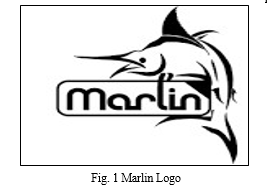
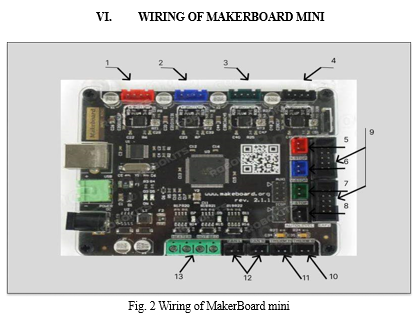
Connections to the control board
- Stepper motor for X-axis.
- Stepper motor for Y-axis.
- Stepper motor for Z-axis.
- Stepper motor for Extruder.
- End stop for stepper motor which controls X-axis
- End stop for stepper motor which controls Y-axis
- End stop for stepper motor which controls Z-axis
- End stop for extruder 9. Display
- Thermistor From bed
- Thermistor From hot end
- fans 13. heating rods of bed and hot end.
VII. MATERIAL USED: PLA
PLA (Polylactic Acid) is a biodegradable and sustainable thermoplastic polyester derived from renewable resources such as corn starch or sugarcane. It is a popular 3D printing material due to its ease of use, low toxicity, and environmentally friendly nature.
Here are some key specifications and information about PLA material:
- Glass transition temperature: 60°C
- Melting Temperature: 160°C to 220°C
- Density: 1.24 g/cm³
- Tensile strength: 45-100 MPa
- Elongation at break: 5-20%
- Biodegradability: PLA is compostable under industrial composting conditions
- Storage: PLA should be stored in a cool, dry place away from UV light to prevent degradation
- Post-processing: PLA can be sanded, painted, and glued, but is not suitable for high- temperature applications or exposure to moisture.
Overall, PLA is a versatile and eco-friendly material that is widely used in various applications such as packaging, textiles, and 3D printing.
A. LA (Polylactic Acid) and ABS (Acrylonitrile Butadiene Styrene) are two popular materials used in 3D printing, but PLA is often preferred over ABS for several reasons:
- Eco-friendliness: PLA is derived from renewable resources such as corn starch or sugarcane, while ABS is made from petroleum-based materials. PLA is biodegradable and compostable under industrial composting conditions, making it more environmentally friendly.
- Ease of use: PLA is easier to print with than ABS. It requires lower printing temperatures and does not require a heated bed, while ABS requires higher temperatures and a heated bed to prevent warping and cracking.
- Smell and toxicity: PLA produce less odour and fumes during printing than ABS, which can produce a strong, unpleasant smell and potentially harmful fumes.
- Surface finish: PLA prints typically have a smoother and shinier surface finish than ABS, which can be more prone to visible layer lines and require post-processing to achieve a smooth surface.
Overall, PLA is a more user-friendly, eco-friendly, and safer material for 3D printing, while ABS is better suited for more demanding applications that require higher strength and durability.
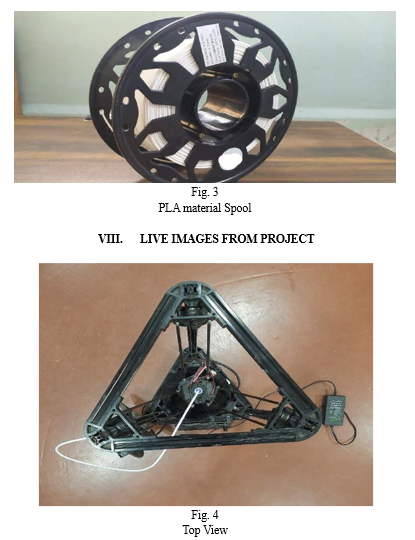
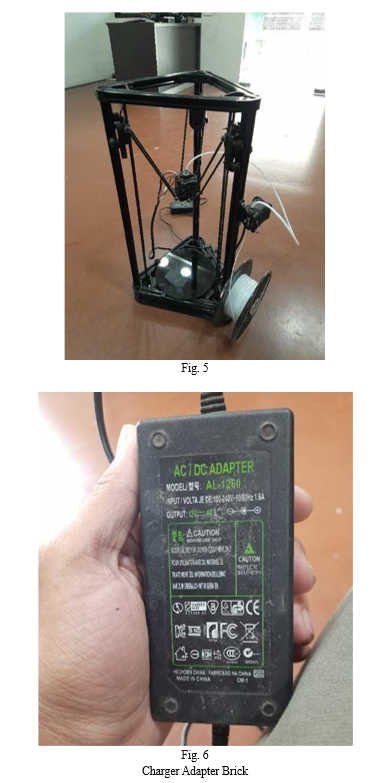
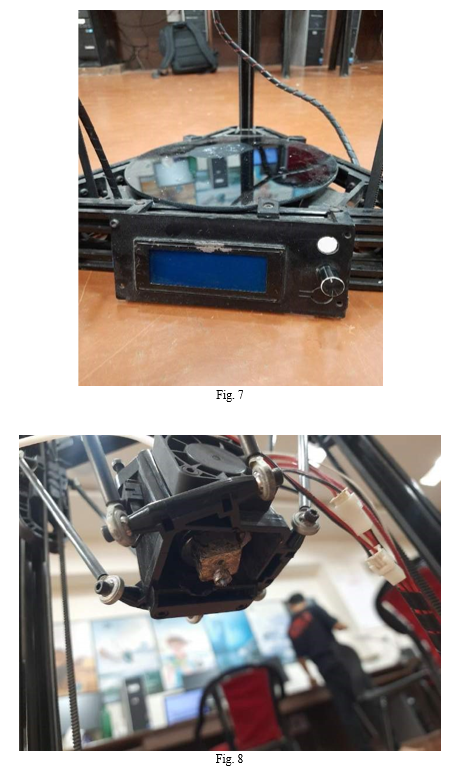
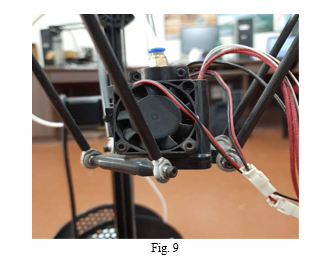
IX. ACKNOWLEDGEMENT
I would like to express my sincere gratitude to several individuals and organizations who have contributed to the successful completion of our research paper. First and foremost, I extend my heartfelt thanks to our project guide Prof. R. M. Panage for his unwavering support, guidance, and expertise throughout the research process. His valuable insights and suggestions have been instrumental in shaping this paper and making it more meaningful.
I would also like to thank our Head of Department Prof. Bhoomkar for providing us with the necessary resources and infrastructure to carry out our research work. His encouragement and support have been a great source of motivation for us throughout the project.
I would like to express my gratitude to the company named ‘Geoclid 3D Printing Solutions’ for their valuable contribution to this research work. The company's willingness to share their expertise and resources has greatly enhanced the quality of our research.
I would like to extend my gratitude to Prof. Satawe for his financial support in the form of sponsorship. His generosity has provided us with the necessary financial resources to conduct this research work successfully. His contribution has been a significant help to us, and we are deeply grateful for his support.
Once again, I would like to express my heartfelt thanks to Prof. R. M. Panage, Prof. Bhoomkar, Geoclid, and Prof. Satawe for their invaluable support, guidance, and contributions to our research paper.
Conclusion
In conclusion, the Delta 3D printer represents a significant technological advancement in the world of 3D printing. Its unique design allows for greater accuracy, speed, and versatility, making it a popular choice among hobbyists, professionals, and researchers alike. While there are still limitations to the technology, such as print volume and material compatibility, ongoing research and development continue to push the boundaries of what is possible with Delta 3D printing. As the technology evolves, it is likely that Delta 3D printers will become even more accessible and widespread, further expanding the applications and potential of 3D printing in a variety of fields. Overall, the Delta 3D printer offers a promising future for the 3D printing industry and beyond.
References
[1] I. Chow-Miller, How Does 3D Printing Work, Cavendish Square, New York, NY, USA, 2017. [2] D. Gewirtz, “DIY-IT project: 3D printing discovery series,” February 2018, https://www.zdnet.com/article/3d-printing- hands-on-understanding-the-difference-between-delta-and- cartesian-printers/. [3] A. Agrawal and S. Srivastava, “Universal delta 3D printer,” International Journal of Technical Research and Applications, vol. 4, no. 4, pp. 52–57, 2016. [4] F. Sovaila, C. Sovaila, and N. Baroiu, “Delta 3D printer,” Journal of Industrial Design and Engineering Graphics, vol. 11, no. 1, pp. 29–34, 2016. [5] B. M. Schmitt, C. F. Zirbes, C. Bonin, D. Lohmann, D. C. Lencina, and A. C. S. Netto, “A comparative study of cartesian and delta 3D printers on producing PLA parts,” Materials Research, vol. 20, no. 2, pp. 883–886, 2018. [6] C. K. Dey, Strategies to reduce supply chain disruptions in Ghana, Ph.D. thesis, Walden University, Minneapolis, MN, USA, 2016. [7] C. Bell, 3D Printing with Delta Printers, APRESS, p. 341, New York, NY, USA, 2015. [8] https://www.wikipedia.org/
Copyright
Copyright © 2023 Prof. Rohan M. Panage, Prof. Kaustubh D. Agashe, Ms. Pragati H. Sakore, Mr. Atharv S. Kulkarni, Mr. Atharva S. Bele. This is an open access article distributed under the Creative Commons Attribution License, which permits unrestricted use, distribution, and reproduction in any medium, provided the original work is properly cited.

Download Paper
Paper Id : IJRASET51674
Publish Date : 2023-05-06
ISSN : 2321-9653
Publisher Name : IJRASET
DOI Link : Click Here
 Submit Paper Online
Submit Paper Online

